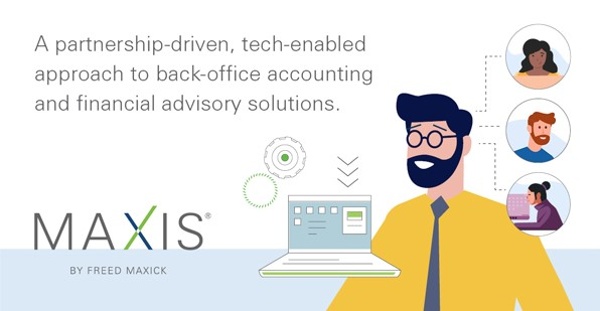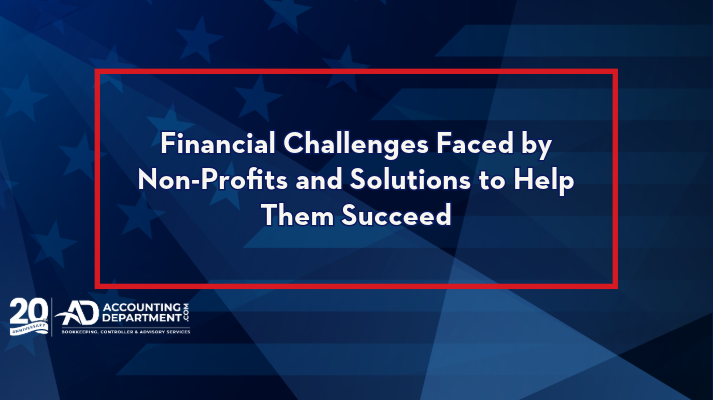
Not-for-profits can, and must, keep up with advancing technology
When thinking of technological innovation, the not-for-profit sector is not likely to be one of the first places that come to mind. Not-for-profits serve important missions, but they often do so with limited resources. Fortunately, many innovations can significantly improve not-for-profit organizations’ operations and support their missions at reasonable costs.
So how can you identify and leverage new technologies?
Frugal Technology Upgrades for Nonprofits
Cost is a factor for many not-for-profit organizations when purchasing or updating technology. They do not have the budgets to invest in extensive and expensive equipment and systems. The good news is that it is no longer necessary to purchase a vast server farm in order to take advantage of many technological solutions. Enter “frugal innovation” or “frugal engineering,” which frees constraints that make goods, resources, and methods inaccessible to not-for-profit organizations and developing countries, and make technologies more affordable and/or attainable.
Cloud Technology for Nonprofits
Using cloud technology to store data and manage other digital processes can save significant expenses. MAXIS® by Freed Maxick is a high-tech outsourced accounting solution that utilizes the cloud to provide better accuracy, accessibility, timeliness, and security. Benefits include:
- The cloud does not need local servers as long as they have strong and reliable internet service
- MAXIS is a scalable service, meaning you invest in what you need, when you need it, without having to buy new software or hardware. The technology is customized and scalable for individual company needs — as you grow, it grows.
- Employees, volunteers, and others can collaborate more efficiently, even across distances
- Updated automatically and frequently to ensure seamless business continuity with faster data recovery
Accounting Automation and Outsourced Accounting for Nonprofits
Companies with manual accounts payable (AP) processes have higher overhead costs. Some estimates suggest it costs nearly five times more to process a single invoice. CPA Practice Advisor has reported that, “Seven in ten finance teams (72%) spend up to 10 people-hours per week, or 520 hours per year on AP-related tasks that could be automated, such as invoice processing, supplier inquiries, supplier payments execution, purchase order (PO) matching, new supplier registration, and payment reconciliation.” And other studies conclude that the average cost to an organization is anywhere from $12 to $30 — per invoice! Not to mention the cost of paper and postage.
Additionally, manual tasks put a strain on resources, which takes away from higher-value tasks. For example, liberating and reallocating accounting personnel’s time to projects like pulling, analyzing, and reporting data and benchmarks can elevate their contributions, provide more proactive input, and add measurable value to the organization.
Accounting automation simplifies processes, eliminates costly mistakes, and provides more flexibility. It also ensures more timely activity preventing possibility of delays in processing or payment, and reduces or eliminates the likelihood of errors and/or fraud against nonprofits. Automation protects the organization by monitoring transactions and creating process, such as KPIs in custom dashboards that alert you when something is amiss. A system, like MAXIS, not only reduces manual entry and repetitive tasks, it can interface with different technologies (banking, payroll, CRM, Bill.com, Expensify, etc.) to streamline operations and increase efficiency to better deploy human capital to further the mission.
Centralized Donor Data (with Backups!): CRM For Nonprofits
A donor list is often a not-for-profit organization’s most valuable asset. Keeping it organized, accessible, and protected is vitally important. Customer relationship management (CRM) systems allow not-for-profits to store all of their donor data in a central location and housed in the cloud. Everyone in the organization who deals with issues involving donors will know where to find important information, saving time and improving efficiency.
The downside of centralizing anything is that if something goes wrong, you risk losing everything. CRM services typically provide regular backup protocols to ensure that data is safe.
Mobile Device Security for Nonprofits: Efficient and Safe Use Best Practices
Remote work was already on the rise before the COVID-19 pandemic, but today it is a preferred way of doing business for countless people and organizations. Keeping clear lines of communication is essential with any workforce, but especially one that is partially or wholly remote.
Mobile devices can now perform many of the same functions as computers and are commonly used for work purposes. Not-for-profits can leverage smartphones and tablets to improve efficiency, but should prioritize the implementation of device security and protocols throughout the organization.
Allowing remote access to any computer system brings cybersecurity risks for nonprofits and small businesses. Organizations can choose to provide mobile devices to employees to use exclusively for work purposes at a significant expense. Another option is to invest in a mobile device management (MDM) system that protects an organization’s devices and data. Efficient use of MDM software can allow a not-for-profit to enact a bring-your-own-device (BYOD) program, in which employees use their own smartphones, tablets, and laptops for work purposes. BYOD has gained significant popularity among businesses and not-for-profits.
AI for Nonprofits: Data Analysis
While not-for-profit organizations possess data that is of great value, few are able to take full advantage of it as they lack the resources to hire expert data analysts. Artificial intelligence (AI) for nonprofits can provide some data analysis support at a much lower cost, including:
- Identify duplicate or missing data and inconsistent formatting
- Find patterns or trends in donor data, such as periods of time when donations are particularly high or low, geographic areas with elevated levels of donations, and ascertain demographic groups that are most likely to donate
- Create donor groups based on profiled common factors which can improve an organization’s fundraising efforts, such as targeting consistent donors for a particular campaign
Technology For Nonprofits Can Help Serve Your Mission
Technology can be transformative but it’s constantly advancing and it can be difficult to keep up with the latest developments while running an impactful not-for-profit. The not-for-profit team at Freed Maxick helps guide organizations toward cutting-edge tech that can enhance performance and improve efficiency. For a complimentary conversation, contact Holly Hejmowski, Director of Assurance and Advisory Practice, directly at Holly.Hejmowski@FreedMaxick.com.
Discover more from reviewer4you.com
Subscribe to get the latest posts to your email.







